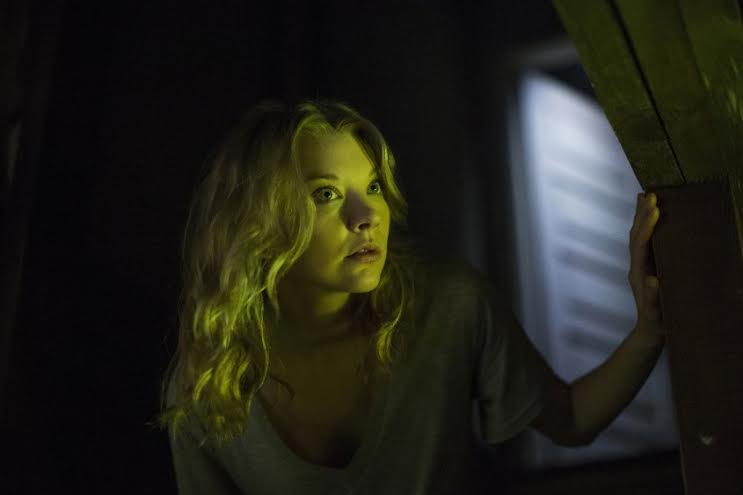The Forest
Directed by: Jason Zada
Starring: Natalie Dormer, Yukiyoshi Ozawa, Taylor Kinney, Eoin Macken,
Rated: PG-13 for disturbing thematic content and images
“The Forest” feels like a mediocre remake of a Japanese horror movie. Alas, it is not a remake (which would at least point us toward a possible good time), it’s just a mediocre movie. The plot has some promise: a woman looking for her lost twin sister in a forest widely reputed to be full of angry ghosts. Unfortunately, the filmmakers went the route of jump-scares and “scary” makeup we’ve seen a million times, and set the movie in Japan for no apparent reason. To make matters worse, the film never really addresses the fact that suicide is the second leading cause of death in Japan, and that the forest is not only real but one of the most popular locations for suicides in the world.
Our heroine, blonde and serious Sarah (Natalie Dormer), just knows her twin sister Jess (also Dormer, brunette and less serious) is in trouble. She flies to Japan, where Jess was teaching English, and learns that her sister was seen leaving the path in Aokigahara forest, notorious for being a popular suicide location. Naturally she manages to find someone willing to take her to the forest – magazine writer Aiden (Taylor Kinney) and ranger Michi (Yukiyoshi Ozawa) – but she ignores everybody’s warnings and winds up lost in the enormous forest. She sees things and spends a lot of time running and screaming.
Aiden, who joins her in her off-the-path trek at first, wants to do a story about her, but may have an ulterior motive. Or is that the forest playing tricks on her? We learn more about Sarah and Jess in flashbacks and Sarah’s conversations with Aiden, but it seems like everything we learn only raises more questions. For example, the flashback we see when she is describing her parents’ death to Aiden doesn’t line up with what she’s telling him, but beyond a vision she has later in the forest, it’s never brought up again. What actually happened? How is it related to Sarah’s experiences now?
The visuals are effective, for the most part – ghostly figures behind Sarah as she runs through the darkening forest, closeups of the beautiful and strange trees and moss that surround her, shots where only the narrow beam of her cellphone’s flashlight function lights what’s ahead of her, and so on. Where they fell flat for me was when we actually see things that are clearly supposed to be scary – sudden, dramatic closeups of heavy prosthetic makeup, a creepy old lady, and so on. It’s kind of ironic, really – Japan’s cinematic library includes a ton of eerie, genuinely frightening visuals, but “The Forest” ignores its setting and relies on the old American standard of pointy teeth and a malformed human face.
It’s never really clear why the film is set where it is; sure, a forest notorious for suicides is creepy, but “The Forest” would have been just as effective set in, say, rural Appalachia, or somewhere else Stateside with a big forest. There’s so little of Japan in the story that the location is almost meaningless – what Japanese culture we do get is played up as foreign (people who don’t speak English! Eek!), and the actual humanitarian crisis Aokigahara is part of is completely ignored.
If you just want a flick with jump scares and spooky atmosphere, and don’t mind bad storytelling or problematic cultural appropriation, “The Forest” will probably hit the spot. If you like your horror movies to be actually frightening and like stories with plots that come together, stay away.
